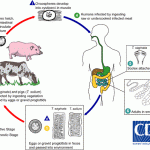
T saginata infection is commonly associated with the ingestion of undercooked beef. This is distinguished from infection with T solium because human infection with the larval form (as in cysticercosis) is extremely rare with T saginata infection.
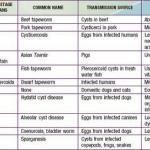
T solium infection occurs worldwide; endemic areas include Mexico, South and Central America, Africa, Southeast Asia, India, and the Philippines. T solium infection is commonly linked to the ingestion of undercooked pork, although other animals may harbor the larval form of the parasite. Infection may be intestinal, which is typically asymptomatic, or extraintestinal (called cysticercosis, see below), which is caused by larval forms of T solium within the tissues of the human host.
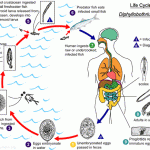
D latum is found worldwide, and infection is acquired by ingestion of contaminated raw or improperly cooked freshwater fish. Because of enthusiasm for raw or undercooked fish, Siberia, Europe, Canada, Alaska, and Japan are endemic regions for D latum infection. Once the D latum cyst has been ingested, the worm matures within the human intestine and begins to produce eggs after 5 weeks.
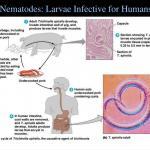
Nematodes (roundworms) are nonsegmented, tapered, bilaterally symmetrical, cylindrical organisms that have complete digestive tracts and reproduce sexually. Although > 500,000 species of nematodes have been described, only a small number are commonly encountered as human parasites. Most nematodes have complex life cycles, sometimes involving several larval forms and intermediate hosts or free-living stages.
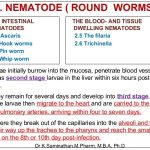
Worldwide, more than 1 billion people are infested with Ascaris lumbricoides, the causative agent of ascariasis or roundworm. More than 4 million people are estimated to be infected in the United States. Infection occurs predominately in the southeastern states and more commonly in younger children, and it is associated with lower socioeconomic status. The organism is acquired through ingestion of embryonic forms of the worm, which are found in fecally contaminated soil.
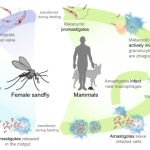
The genera Leishmania and Trypanosoma are members of the family Trypanosomatidae. These protozoans cause diseases with widely varied clinical presentations as well as geographic distributions, including leishmaniasis, American trypanosomiasis (Chagas’ disease), and African trypanosomiasis (sleeping sickness).
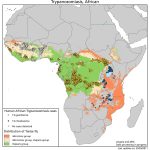
An estimated 50 million people are at risk for acquiring African trypanosomiasis worldwide, and there are 20,000 reported new cases annually. This is likely an underestimate because reporting in endemic countries is incomplete. There are no natural life cycles of T brucei outside Africa; thus, the only cases seen outside Africa are imported.
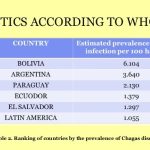
T cruzi is found only in the Western Hemisphere, where it ranges from the southern United States to Argentina. An estimated 16 million-18 million people in Latin America have chronic T cruzi infections and ~ 50,000 die of Chagas’ disease each year. In the United States, there has been concern about transmission of the organism via blood transfusion from unsuspected infected donors who are immigrants from endemic zones. Similar concerns arise for organ transplant recipients.